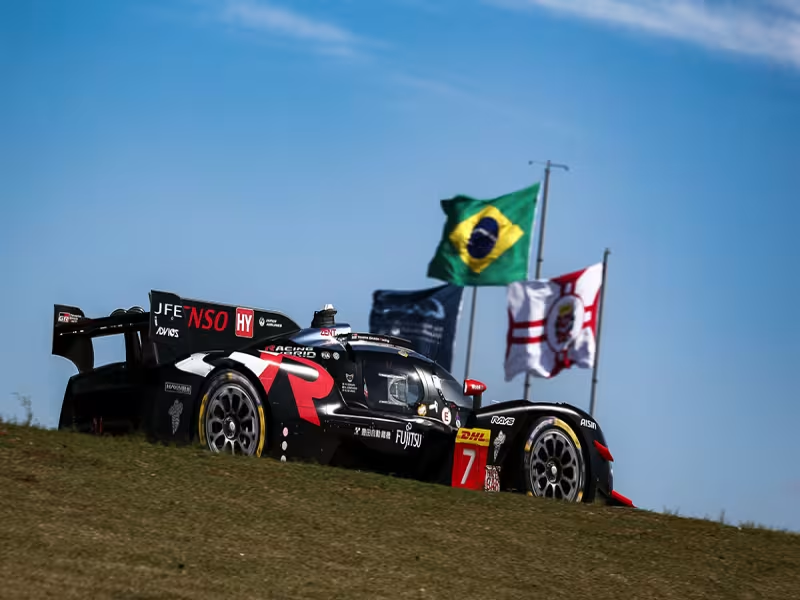
SHERIDAN, WYOMING – July 28, 2025 – The roar of hybrid engines, the scent of burnt rubber, and the passionate cheers of Brazilian fans set the stage as TOYOTA GAZOO Racing returned to Interlagos for the 6 Hours of São Paulo on July 13. For a team still recovering from a tough Le Mans, this race wasn’t just another stop on the FIA World Endurance Championship calendar—it was a shot at redemption.
A legendary track with unfinished business
Interlagos—officially the Autodromo José Carlos Pace—is no stranger to TOYOTA GAZOO Racing glory. From their first win in 2012 to clinching the manufacturers' title in 2014, the circuit has been a stage for big moments. And in 2024, a commanding victory here helped propel the team’s title bid.
This year, hopes were high but the pressure was real. After a bittersweet Le Mans finish—5th for the #7 car and a frustrating 15th for the #8—the team needed momentum. They arrived in São Paulo determined to reconnect with the podium and reignite their championship spirit.
Fewer drivers, higher stakes
The absence of Sébastien Buemi, who missed the race due to Formula E obligations, put added pressure on his teammates. That meant Brendon Hartley and Ryo Hirakawa had to handle the six-hour endurance run as a duo in the #8 GR010 HYBRID.
But they were undeterred. As Ryo Hirakawa explained, “It’s going to be a challenge to repeat that result this year but the whole team is fighting hard to get us back on the podium again… Our team spirit is really strong, and we’re all determined to bounce back after Le Mans.”
From history to heart: why Brazil matters
Interlagos isn’t just another racetrack. For many drivers, it’s emotional terrain—full of racing history and a crowd that lives and breathes motorsport. Mike Conway put it best: “It’s a true motorsport country and the fans are just incredible… It’s a place I always enjoy visiting.”
For fans watching, especially those in South America, Toyota’s presence adds weight to a race that blends tradition with innovation. The hybrid-powered GR010 machines are engineering marvels—but what really electrifies the experience is the human drive to persevere, even when odds are stacked.
Editorial highlight: How does Interlagos compare to Le Mans?
While Le Mans is the marathon of endurance racing, Interlagos is more like a punchy 10K—shorter, twistier, and emotionally intense. Here’s a quick look:
- Length & Layout:
- Le Mans: Over 13.6km with long straights and chicanes
- Interlagos: 4.3km, anti-clockwise, with rapid elevation changes
- Atmosphere:
- Le Mans: Global spectacle, 24-hour endurance
- Interlagos: Intimate, passionate fans, high-pressure sprints
- Car Setup:
- Le Mans: Balanced for speed and night driving
- Interlagos: Tuned for grip and quick handling on lower-grip tarmac
Team resilience on full display
Kamui Kobayashi, who juggles roles as driver and Team Principal, acknowledged the uphill battle: “We didn’t get the result we wanted in Le Mans, and this makes it almost impossible in the World Championship, but we never give up and we want to fight for victory at every race.”
And that resilience paid off. Back in their familiar matt black livery, the #7 and #8 cars returned to a track where every curve holds a memory—and every second counts.
Why this matters for fans and future motorsport
For everyday racing fans, TOYOTA GAZOO Racing’s journey is more than just statistics and trophies. It’s a story of persistence, learning from defeat, and showing up stronger. In a world increasingly leaning into hybrid technology, Toyota's racing efforts also represent the cutting edge of what's coming to future road cars.
So whether you’re watching from the grandstands or the comfort of your living room, races like the 6 Hours of São Paulo remind us: high-tech can still have a human soul—and every comeback starts with belief.
Learn more about TOYOTA GAZOO Racing and upcoming races at https://toyotagazooracing.com.